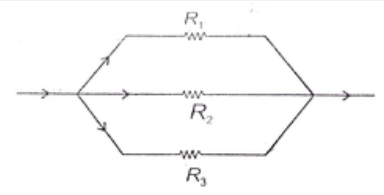The conbined resistance R of two resistors R,& is given by . If constant Prove that the maximum resistance R is obtained by choosing
Step by step video & image solution for The conbined resistance R of two resistors R,& R_(2)(R_(1),R_(2) gt 0) is given by . (1)/(R)=(1)/(R_(1)) +(1)/(R_(2)). If R_(1)+R_(2)= constant Prove that the maximum resistance R is obtained by choosing R_(1)=R_(2) by Maths experts to help you in doubts & scoring excellent marks in Class 12 exams.
Updated on:21/07/2023Topper's Solved these Questions
- APPLICATIONS OF DERIVATIVESBOOK - NAGEEN PRAKASHAN ENGLISHCHAPTER - APPLICATIONS OF DERIVATIVESEXERCISE - Exercise 6h (multiple Choice Questions)
10 Videos
- APPLICATIONS OF DERIVATIVESBOOK - NAGEEN PRAKASHAN ENGLISHCHAPTER - APPLICATIONS OF DERIVATIVESEXERCISE - Exercise 6i (multiple Choice Questions)
10 Videos
- APPLICATIONS OF DERIVATIVESBOOK - NAGEEN PRAKASHAN ENGLISHCHAPTER - APPLICATIONS OF DERIVATIVESEXERCISE - Exercise 6f
19 Videos
- APPLICATIONS OF INTEGRALSBOOK - NAGEEN PRAKASHAN ENGLISHCHAPTER - APPLICATIONS OF INTEGRALSEXERCISE - Miscellaneous Exercise
19 Videos
Similar Questions
Knowledge Check
When resistors R1andR2 are connected in a parallel electric circuit, the total resistance is 11R1+1R2. This fraction is equivalent to
AR1+R2BR1+R2R1R2CR1R2+R2R1DR1R2R1+R2
Ketones (R1COR2):R1=R2=alkyl group, can be obtained in one step by
View SolutionTwo sources of equal emf are connected to an external resistance R. The internal resistance of the two sources areR1andR2(R1>R1). If the potential difference across the source having internal resistance R2 is zero, then
View SolutionIn the situation shown, resistance R1,R2 and R3 are in the ratio 3:2:1 , then

View Solution(r2+r3)√rr1r2r3=
View SolutionProve the questions
a(rr1+r2r3)=b(rr2+r3r1)=c(rr3+r1r2)
View SolutionValue of 1r21'+1r22+1r23+1r2 is :
View SolutionIf in a triangle, (1−r1r2)(1−r1r3)=2, then the triangle is
View Solution
